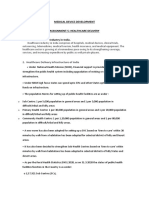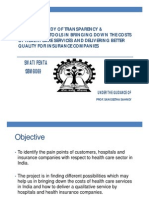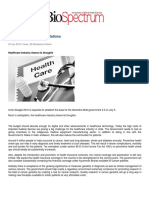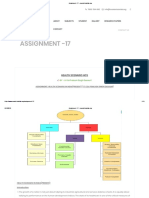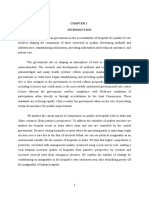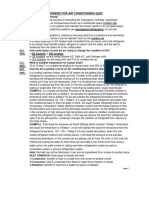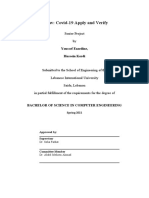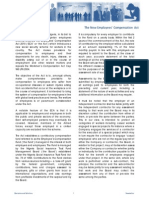10 Point program for affordable and accessible healthcare
Introduction
Easy access and affordability of healthcare is the cornerstone of a just and just society. However, many challenges
remain that prevent many individuals and communities from accessing quality care. We know that there is a positive
co-relation between economic growth and improvement of health indicators. However such a trend has not been
observed in India. Despite economic growth rate of 7% India has not been able to get considerable growth in health
indicators. We feel accessibility and affordability are two major reasons for India’s inefficiency in healthcare.
We will be discussing some possible solutions for the problem of accessibility and affordability of healthcare in India.
1. Electronic Health Records:- In India most of the people are unaware about the importance of their
previous health records so they don’t care to maintain physical reports and many times its very difficult
to maintain physical records for long. So, when person gets in any major health complication doctor’s
are totally clueless to patient’s medical history and to proceed further they have to go through various
avoidable health checkups which leads to hike in overall medical expense. So, if proper health records of
all the citizens is maintained digitally it can make treatment affordable and can be accessed from
anywhere and anytime when needed.
2. Telemedicine and virtual clinics:- As we consistently hear the news about lackness of doctor’s in India so
many times people have to travel long distances to consult a doctor. This problem can be solved by
Telemedicine and virtual clinics. I believe that government should encourage virtual clinics and make
necessary arrangements for government doctors to deliver services through telemedicine and virtual
clinics. We also believe that medical students can also be included in tele consultation process. This will
decrease the cost of transportation and will make accessible to last mile.
3. Online appointment and feedback mechanism for government hospitals:- We feel that there is a
problem of middle men(unauthorized brokers) in government hospitals which make government health
services costly and quiet inaccessible for common people. We believe integration of online appointment
system can reduce this and also be helpful in managing the overcrowding of government hospitals by
allotting specific time slot for OPD patients and by feedback mechanisms a check can be maintained on
the services provided.
4. Mobile clinics and CHC’s:- Working mechanism of CHC’s needs to be modernized by integration of
technology and proper checks and balances has to be maintained on the services provided by them. We
can use AI assistance in CHC’s to address the shortage of helping staff such as receptionist, medical
vendors etc. and for medical staff like doctors and nurses biometric system should be installed to ensure
that they are sitting for specified time. Mobile Van clinic should be introduced to reach remote areas far
from the CHC’s and these mobile clinics can also be helpful in disaster or accident situations.
5. Healthcare Financing:- Proper Government funded insurance policy should be introduced for anyone in
need because as a welfare state its our responsibility to provide quality healthcare to all. This insurance
policy should be digitally monitored and accessible immediately in the time of need. This will make
healthcare system more affordable to people as this will somehow decrease the overall medical
expense.
6. Technology enabled medical devices & ASHA AI:- Technology enabled monitoring devices should be
developed and distributed to patients with serious diseases such as diabetes ,blood-pressure, heart
problems, etc. and ASHA AI should be developed where these patients can upload their daily health
update obtained from these technologically enabled medical devices and the uploaded updates should
be monitored by the experts.
�7. Community partnerships:- Forge partnerships with community-based organizations, faith-based groups,
schools and local governments to leverage existing resources, infrastructure, and networks to expand
access to healthcare services, address social determinants of health, and promote health equity at the
grassroots level.
8. 3D printing and generic medicine:- 3D printing in medical sector allows for the production of
customizable prosthetics and medical devices at a fraction of the cost of traditional manufacturing. This
technology can lead to affordability and accessibility of healthcare in India. Promotion of generic drugs is
essential to control the skyrocketing cost of medicines. An online platform should be developed for the
sale of generic medicines.
9. Health literacy:- Promoting health literacy by educating, and providing workshops and support programs
to help people to understand their health conditions, treatment options, and their rights as patient.
Mental health education should be especially focused on. Mandatory vocational courses should be
introduced in school curriculum about healthcare, mental health and medical system in India. These
courses should be designed online so that they can be completed in vacations.
10. Drone delivery and Air Ambulance:- Proper system for drone delivery of medical necessities should be
introduced and air ambulance facility should also be provided at in cases of grave medical emergencies.




